Arts & Entertainment
From music to fashion, catching up with Steve Grand
‘All American Boy’ now focused on his clothing brand
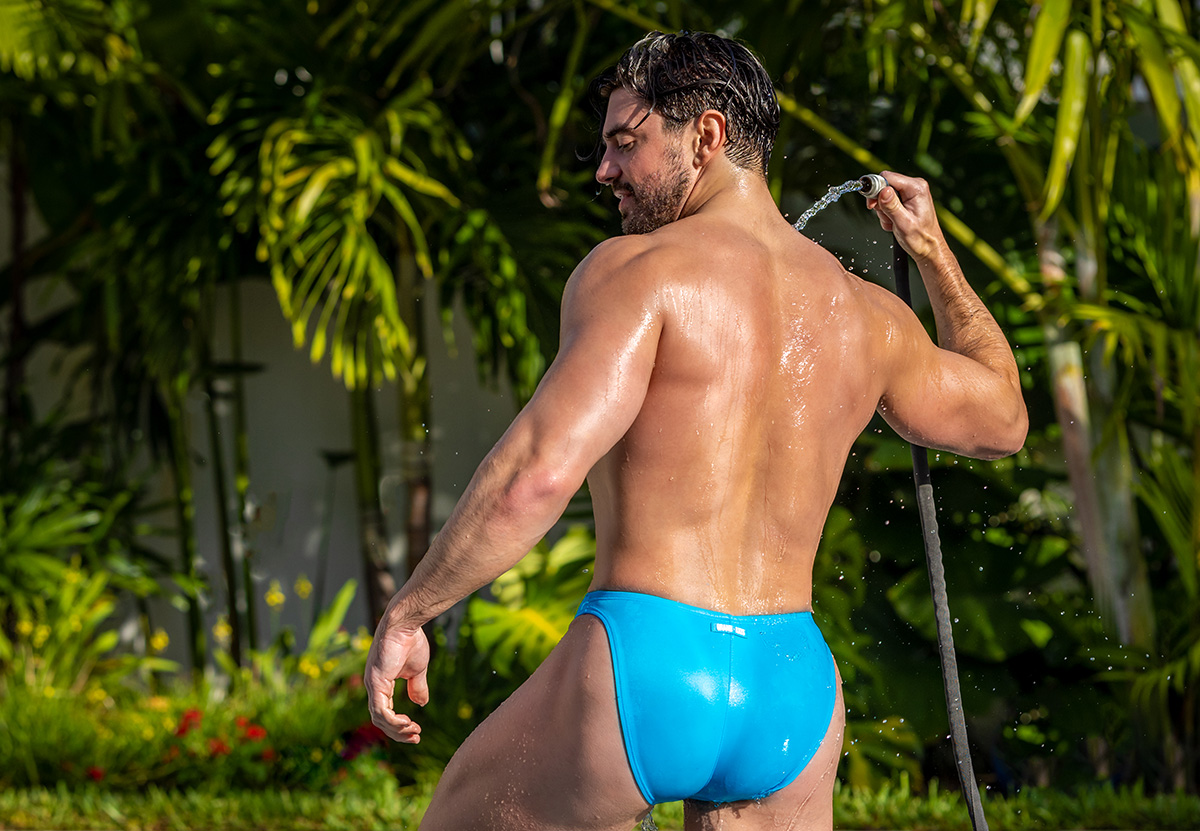
What’s the first thing that comes to mind when you think of gay singer/songwriter turned fashion designer Steve Grand? Some folks will undoubtedly answer his breakout hit single, “All American Boy,” and the accompanying video. Both were significant in that the song was an unabashedly queer country tune with visuals to match. Of course, it didn’t hurt that Grand was model-handsome and had a flawless body on display. So far, we have his singing voice, songwriting chops, and impressive looks and physique. It’s that gym body, and his own personal interest in the kinds of garments that show them off, that has led him to create his Grand Axis (shopGrandAxis.com) clothing line, featuring men’s underwear and swimwear. Steve was kind enough to make time for an interview, and after you finish reading it, you’ll want to follow him on his socials: @GrandAxis (Instagram), @GrandAxis (TikTok), and @Grand_Axis (Twitter). You won’t be disappointed.
BLADE: Since the release of your debut single in 2013, the country-oriented “All American Boy,” several other male country artists, including Ty Herndon, Billy Gilman, Orville Peck, and TJ Osborne have come out as gay. Do you feel that your being an out musician had anything to do with that?
STEVE GRAND: I think, more than anything, it had to do with the major cultural shift that was happening across this country. According to the Gallup polls, public support for gay marriage went from 40% approval in May 2009, to 60% approval in May 2015. Gay marriage was a big topic of discussion in the early 2010s for a lot of reasons. You had artists like (Lady) Gaga frequently talking about her gay fans, you had gay characters coming out in TV shows; you had the repeal of “Don’t Ask Don’t Tell” in 2011, and then Obergefell in 2015. I think the internet, and the rise of social media had more to do with it than anything. Before social media, corporate press and big movie and TV studios drove the narrative on these sorts of things. And because they are beholden to advertisers, which are more conservative and risk-averse, they would often avoid even acknowledging LGBTQ+ people for fear it would upset large sections of the country. But I think social media gave regular people an opportunity to be their authentic selves. And it gave artists/content creators like me the ability to make music and videos that could be seen by millions without needing the backing of a big record label.
BLADE: Almost 10 years ago, in 2015, you released your full-length debut album “All American Boy.” When you look back on that time, how would you describe it?
GRAND: It was a whirlwind. I remember being cognizant of the fact that it was all moving fast and that I needed to make a conscious effort to stop and take in all the cool, special, unique experiences I was having. Looking back, I don’t think I listened to that voice inside me enough. I always felt like my best days were ahead; that my moment had yet to come, and that I just needed to hunker down and keep working. And, unfortunately, that often kept me from embracing the present moment.
It’s funny, my best memories of that time end up being all the times in between, like the road trips with my tour manager and whatever members of the band I was traveling with. I was always thinking about what I needed to be doing better or focused on the show, but it is those conversations on the road when we were tired, hungover, and stressing about where we needed to be, traveling from one venue to the next, that I remember most fondly.
BLADE: What kind of music are you listening to for enjoyment these days?
GRAND: I am loving the new Billie Eilish record. And the country record Post Malone just made. I continue to appreciate him more and more. Whenever I see him in interviews I am just so impressed with how centered and genuine he is; how he seems to know exactly who he is. There is a real depth and a goodness in him, and I think that really comes through in his voice.
BLADE: Am I remembering correctly that for a while, you left Chicago for LA? If that’s correct, what was that experience like for you?
GRAND: I spent some time in LA while I was making my first record. I stayed with a friend of a friend. Funny enough, I had never met them before the day I showed up at their door with my bags. It was on my 24th birthday. They gave and gave to me and never expected anything in return. I don’t think I ever went out and did any nightlife there. The friends I stayed with had a large group of friends and threw a lot of parties and events, so I really benefited from having their sort of built-in group of guys to hang out with when I stayed out there.
BLADE: How long have you been back in Chicago?
GRAND: Other than the several months I’ve spent in LA, my summers in Ptown, and winters in Puerto Vallarta, I’ve been in the Chicago area the whole time.
BLADE: What do you like best about being in Chicago?
GRAND: The lakefront in the summer. The fact that the crumby winters are something we all endure together, which means we also experience the beauty and aliveness of the spring and summer together. The winters are so cold and dead, but it makes you appreciate the beautiful weather in the summer, and all the plant life that comes back to life. The whole city comes alive when it starts getting nice. Everyone’s mood is lifted and there is a real sense that we need to make the most of the summer because it’s fleeting. I also love the people. Chicago is not as transient as cities like LA and New York where most people are not from there. Most Chicagoans have roots here. And people are genuinely nice and kind.
BLADE: In 2019, you launched Grand Axis, a clothing line designed by you that includes underwear, swimwear, shorts, socks, T-shirts, and hats. How did you come up with the name Grand Axis?
GRAND: I was about two weeks from going into production with the name “Grand.” I stupidly assumed I could use it because it was my name, but decided I should hire a trademark attorney just to be sure. I was told there were about 200 other companies that could have a copyright infringement claim, so I needed to come up with a name very quickly. I used word generators and all sorts of other methods of coming up with names. I went with “Axis” because I just like how it sounded together; I thought the word “Axis” was very strong, and I liked that it had the letter X in it, which just looks cool and strong.
BLADE: Was designing this kind of clothing a lifelong passion of yours, or was it something you stumbled upon and decided to run with it?
GRAND: Like a lot of gay men, I had my sexual awakening in the men’s underwear aisle at our local department store [laughs]. And personally, I’ve always found an attractive guy in a Speedo, briefs, or jockstrap even more sexy than seeing him naked. Even when I was a college student working a $10 an hour job and didn’t even have many regular clothes, I was buying more of this attire for myself than anything else. I started to get very fixated on the design and fit. I didn’t know how to sew, but I learned enough to make basic alterations to design and fit. Then I found some sites that made custom pieces. I began drawing my own patterns and having them sewn up. When I posted them on Instagram, I’d get lots of guys asking where they could buy them. And at that point I decided I should just produce them en masse. I thought it would be a side gig. I had no idea all that was involved. I think if I knew how hard it would be I may not have started it [laughs]! So, my ignorance kind of worked out to my benefit, because now I am deep in it and I’m happy I made it all work. So far at least.
BLADE: What’s the most rewarding part of Grand Axis?
GRAND: Going to the beach and seeing guys I don’t even know wearing my brand! It is so rewarding to see guys enjoying and looking great in something I spent hundreds of hours obsessing over every detail. That makes it all so worth it.
BLADE: What’s the most challenging part?
GRAND: A few things: Delegating. Dealing with factories to get them to make the pieces exactly how I want. Always having to make decisions about every aspect of the products and the business. The stress of wiring tens of thousands of dollars of my own money before I see any product. At the end of the day, if the factory goes under, you really don’t have any recourse. I’ve heard horror stories from other brands.
BLADE: You shared your recent pec tear workout injury, as well as your recovery, on social media. Are you fully back to 100% or still taking it easy?
GRAND: I am very grateful to be able to say recovery has been easy and painless. I had an excellent surgeon. The first surgeon I saw said it could not be repaired so I am very glad I got a second opinion. The worst part has been not being able to move much weight with it. There are so many exercises I can’t do, I’m afraid to say I have only had a handful of workouts in the last 10 weeks. I will be 75% healed at 12 weeks, but it will still be a few months before I can lift heavy. But in the scheme of things, I am just grateful I had a problem that could be fixed.
BLADE: Your second album, “Not The End of Me” was released in 2018. Because most people came to know you as a singer/songwriter first, I’d be remiss if I didn’t ask if there was more music from you in the works.
GRAND: I still will write music, but most songs are incomplete. I wish I could say I had another record ready to go, but when the pandemic happened and I wasn’t able to perform and lost 90% of my income that year, I had to make Grand-Axis my full-time job to pay the bills. And now that it has, I struggle to find the time and creative energy to make that happen. But I am still hopeful I will get back to it one of these days.

The fifth annual Fredericksburg Pride march and festival was held on Saturday, June 28. A march through the streets of downtown Fredericksburg, Va. was followed by a festival at Riverfront Park.
(Washington Blade photos by Michael Key)
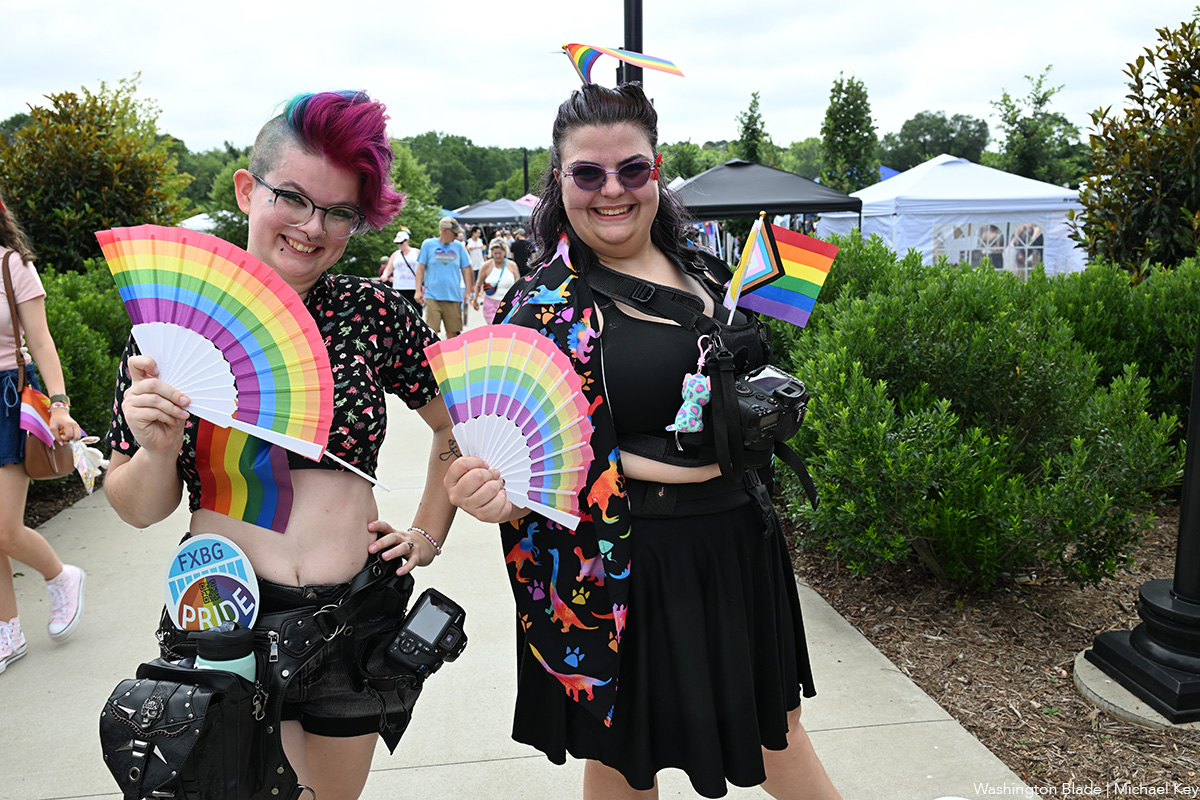
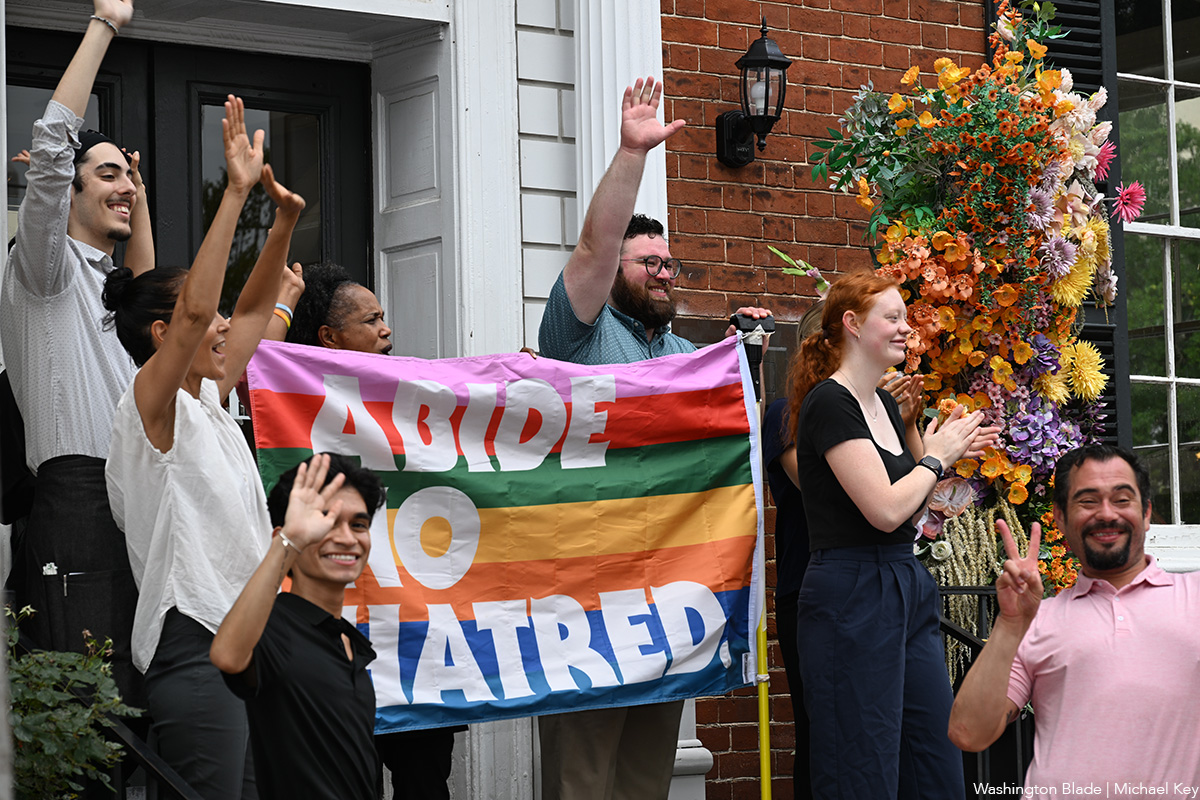
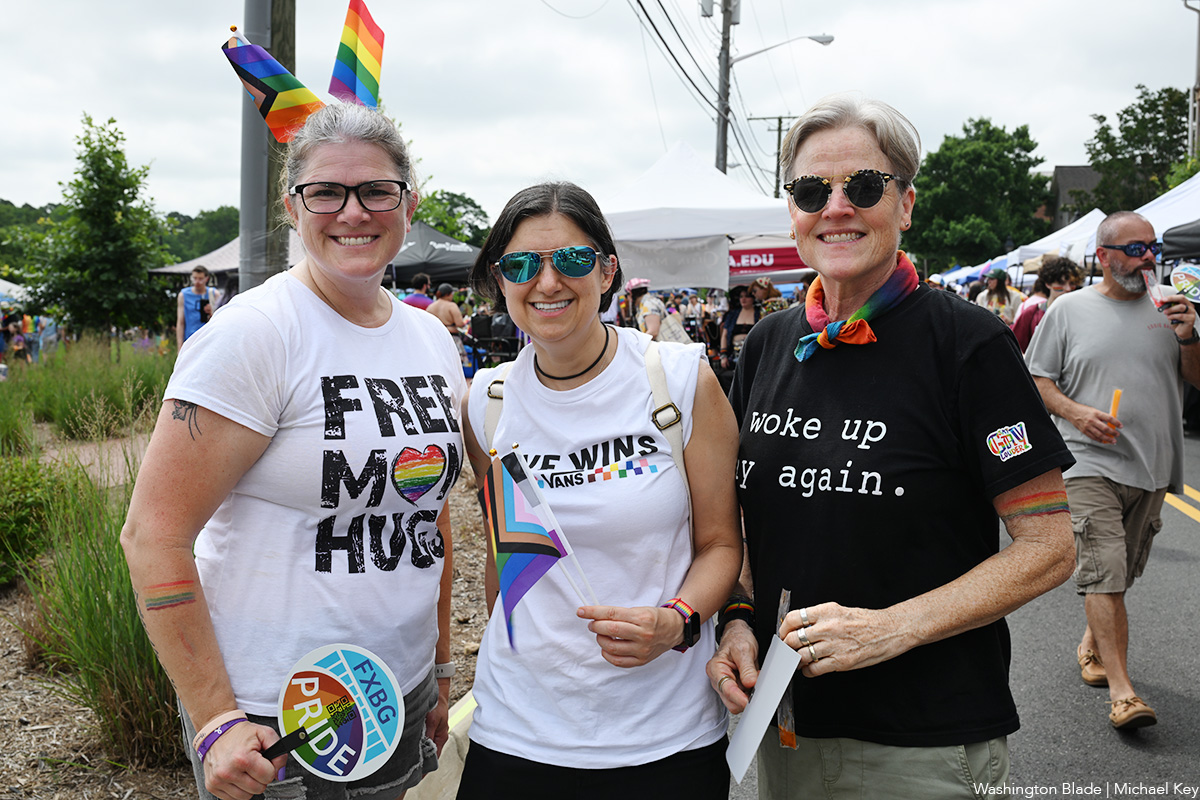
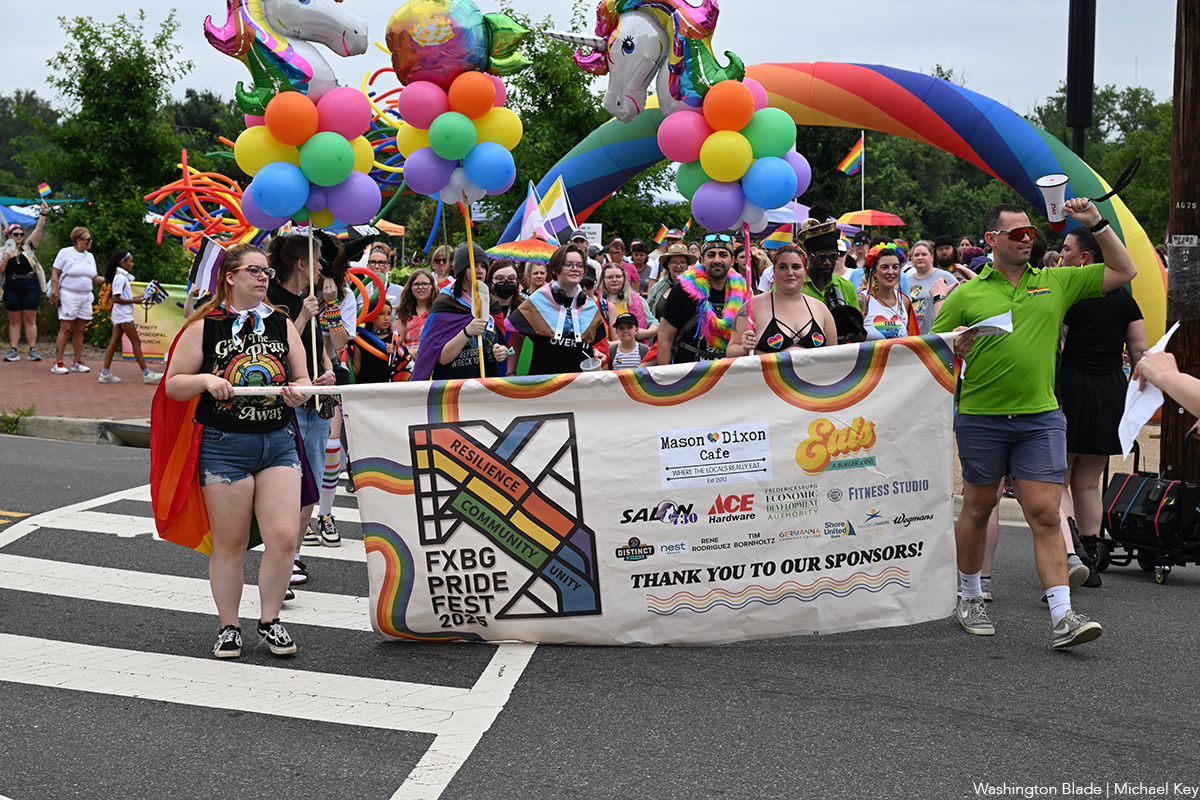
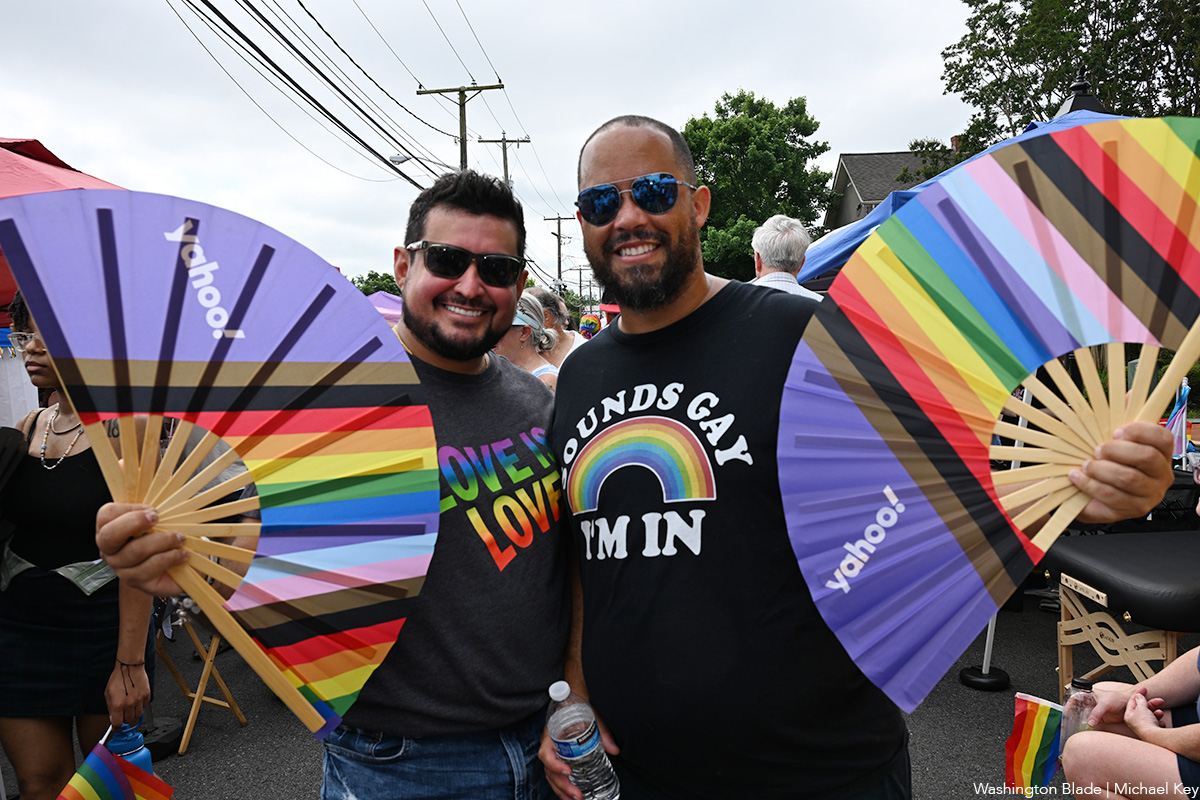



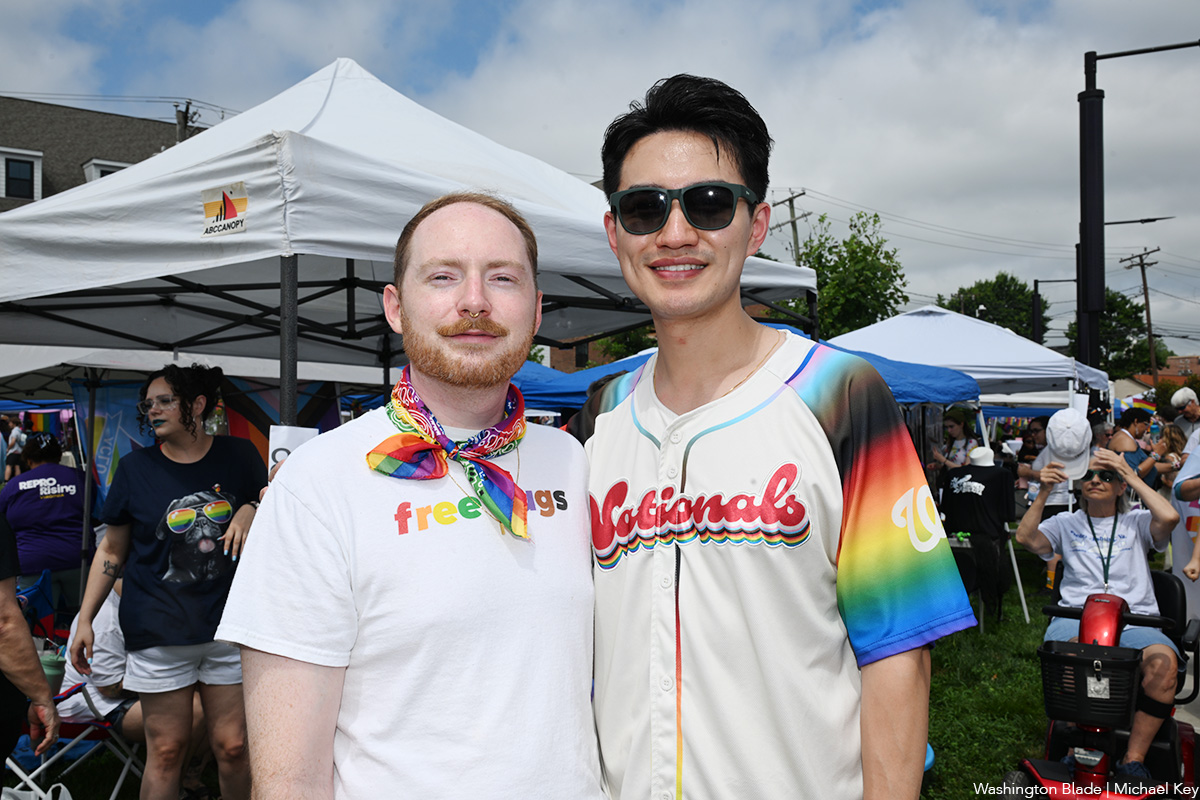

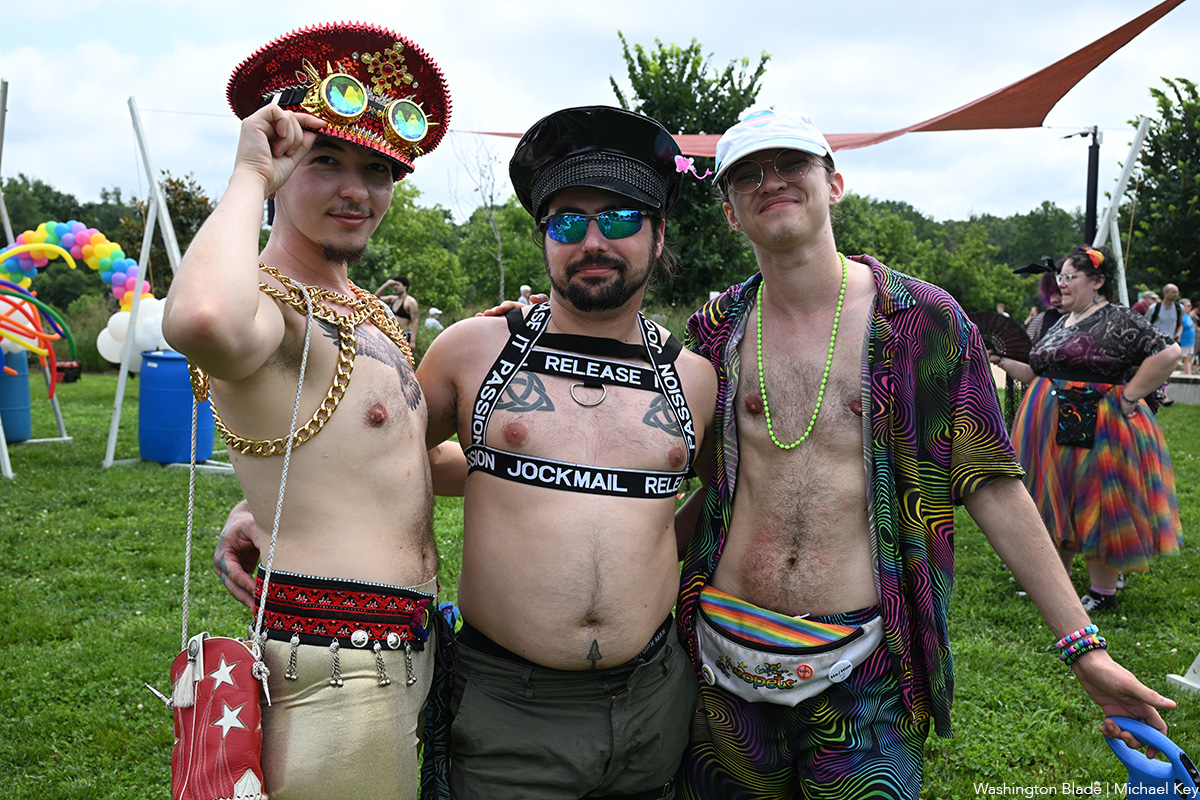




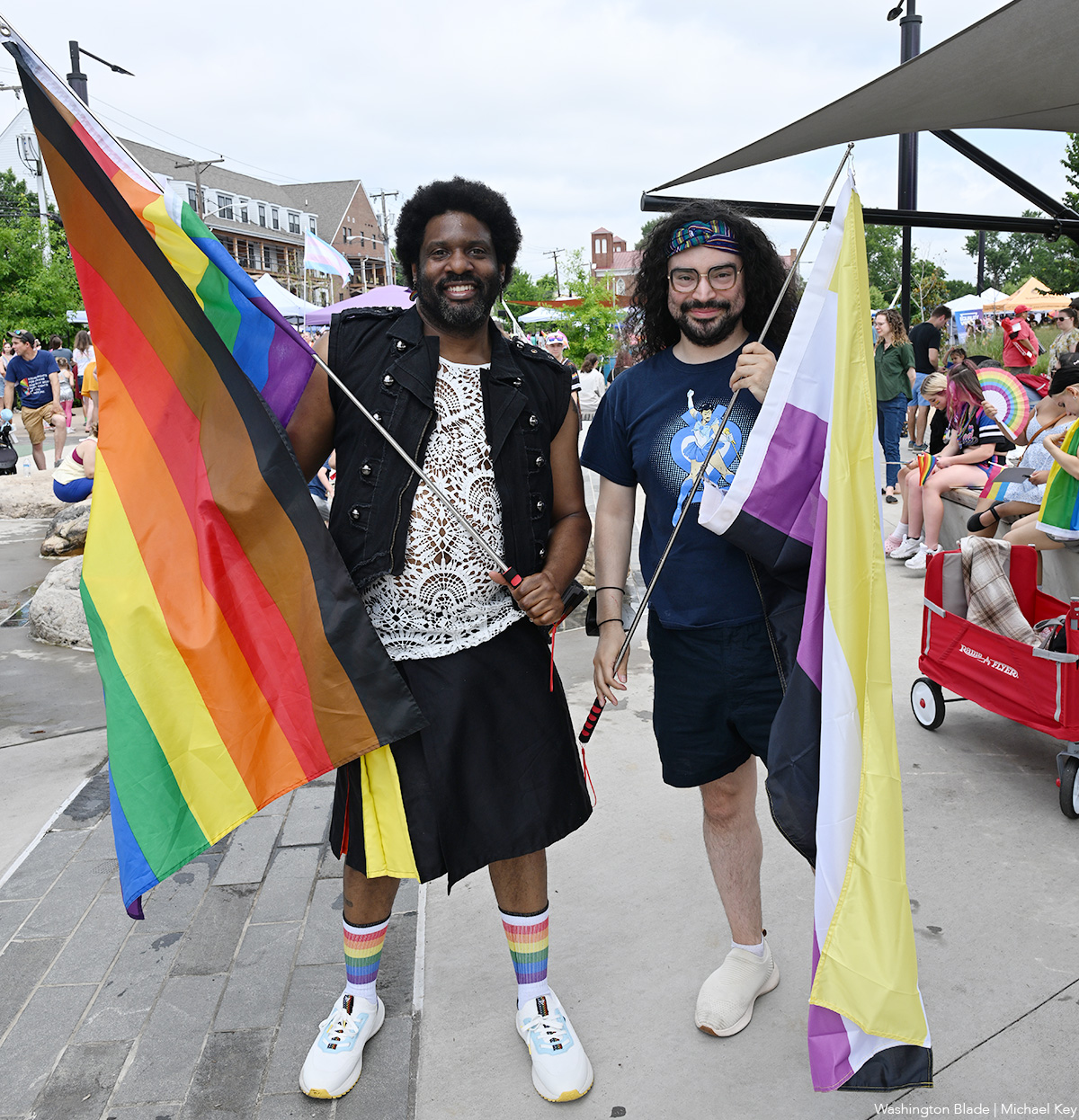

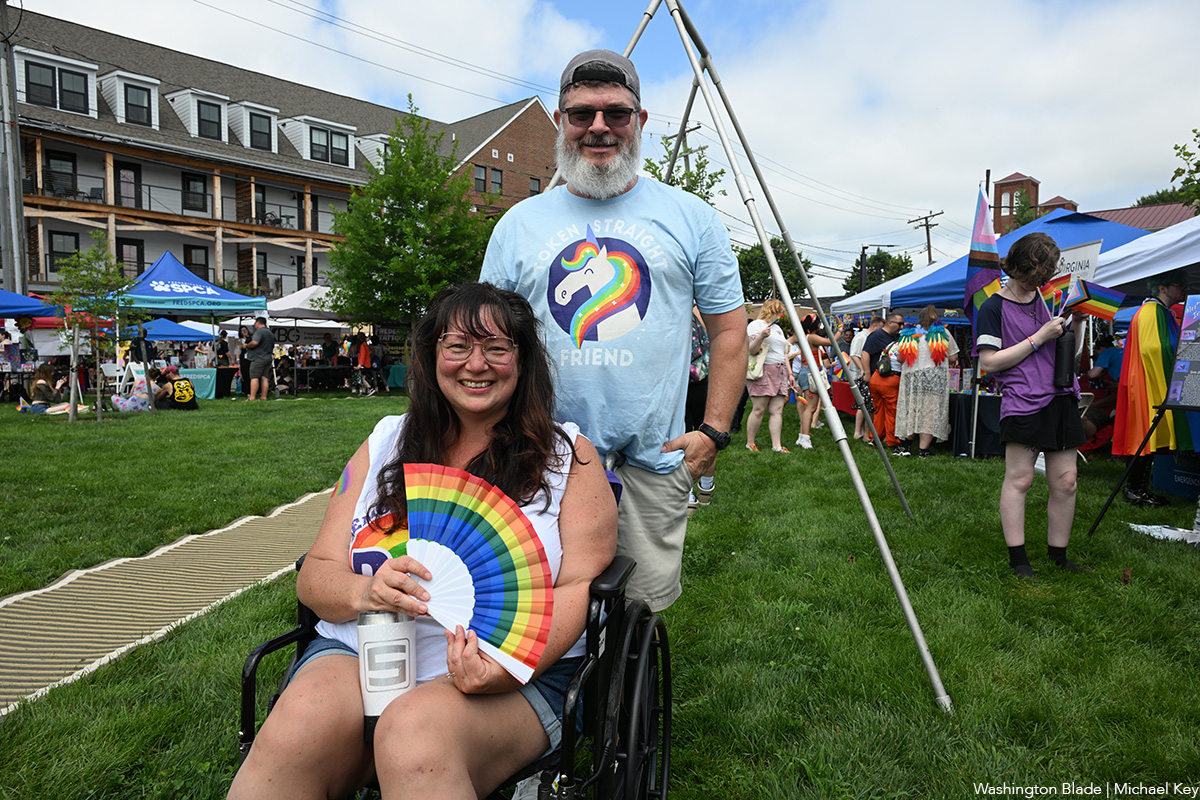
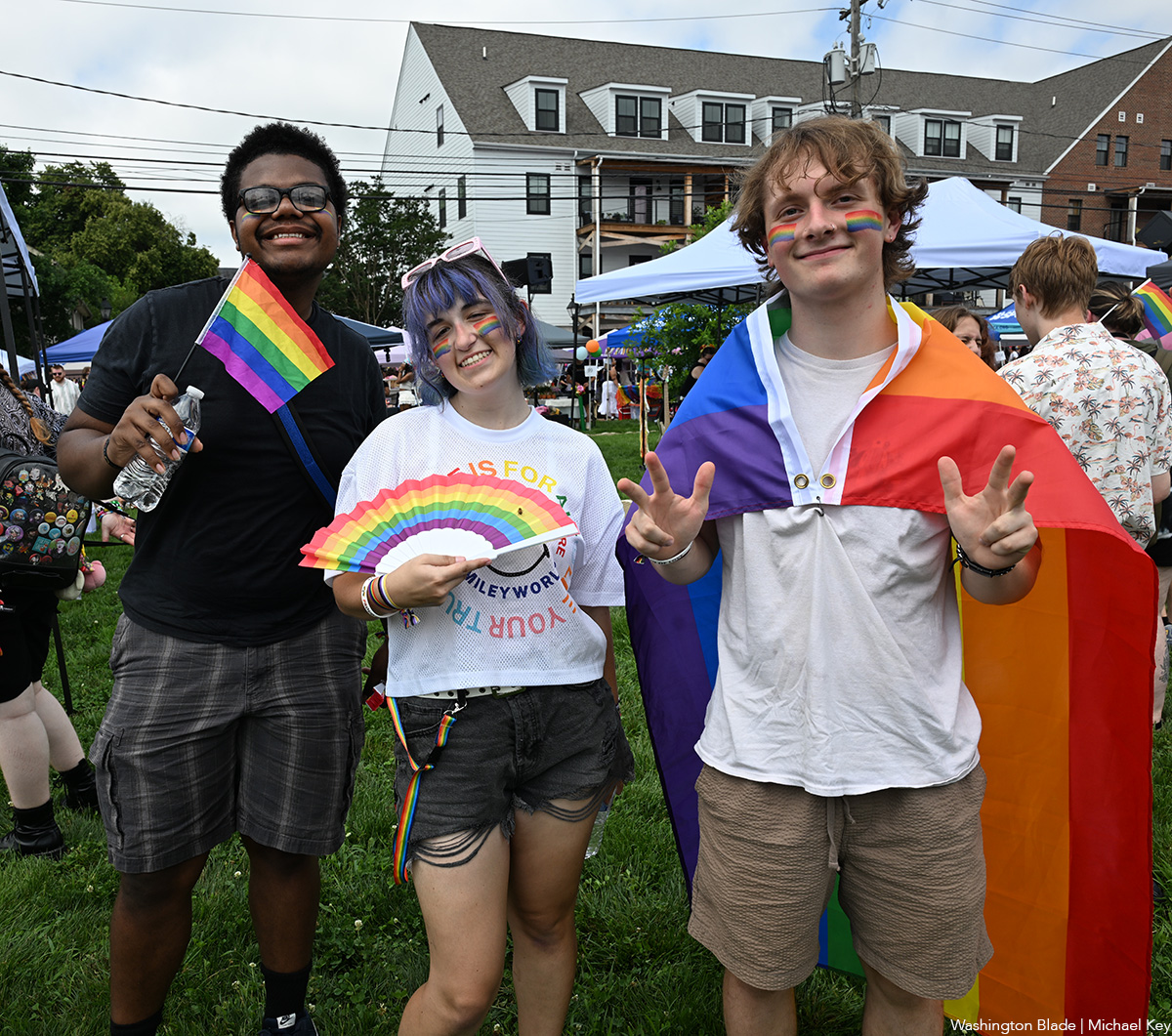
India
Anaya Bangar challenges ban on trans women in female cricket teams
Former Indian cricketer Sanjay Bangar’s daughter has received support
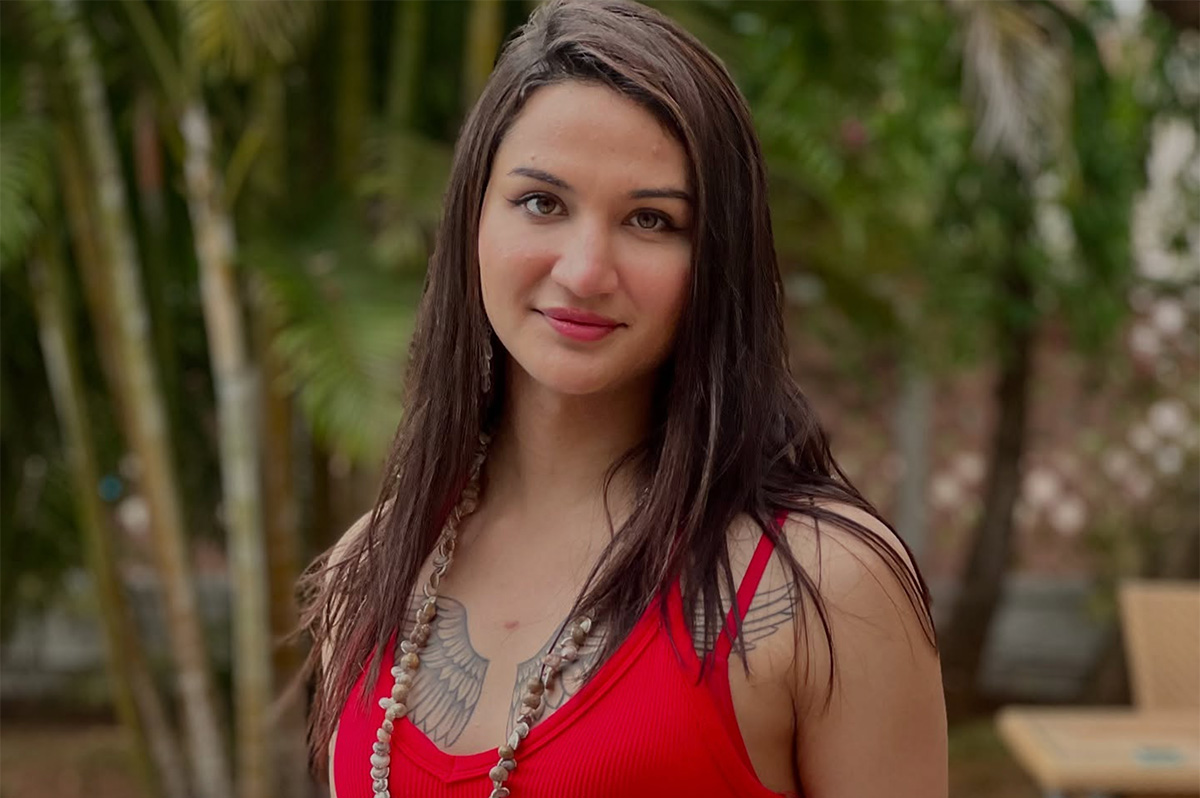
Anaya Bangar, the daughter of former Indian cricketer Sanjay Bangar, has partnered with the Manchester Metropolitan University Institute of Sport in the U.K. to assess her physiological profile following her gender-affirming surgery and undergoing hormone replacement therapy.
From January to March 2025, the 23-year-old underwent an eight-week research project that measured her glucose levels, oxygen uptake, muscle mass, strength, and endurance after extensive training.
The results, shared via Instagram, revealed her metrics align with those of cisgender female athletes, positioning her as eligible for women’s cricket under current scientific standards. Bangar’s findings challenge the International Cricket Council’s 2023 ban on transgender athletes in women’s cricket, prompting her to call for a science-based dialogue with the Board of Control for Cricket in India and the ICC to reform policies for transgender inclusion.
“I am talking with scientific evidence in my hand,” Bangar said in an interview posted to her Instagram page. “So, I hope, this makes an impact and I will be hoping to BCCI and ICC talking with me and discussing this further.”
On Nov. 21, 2023, the ICC enacted a controversial policy barring trans women from international women’s cricket. Finalized after a board meeting in Ahmedabad, India, the regulation prohibits any trans player who has experienced male puberty from competing, irrespective of gender-affirming surgery or hormone therapy. Developed through a 9-month consultation led by the ICC’s Medical Advisory Committee, the rule aims to safeguard the “integrity, safety, and fairness” of women’s cricket but has drawn criticism for excluding athletes like Canada’s Danielle McGahey, the first trans woman to play internationally. The policy, which allows domestic boards to set their own rules, is slated for review by November 2025.
Bangar shared a document on social media verifying her participation in a physiological study at the Manchester Metropolitan University Institute of Sport, conducted from Jan. 20 to March 3, 2025, focused on cricket performance. The report confirmed that her vital metrics — including haemoglobin, blood glucose, peak power, and mean power — aligned with those of cisgender female athletes. Initially, her fasting blood glucose measured 6.1 mmol/L, slightly above the typical non-diabetic range of 4.0–5.9 mmol/L, but subsequent tests showed it normalized, reinforcing the study’s findings that her physical profile meets female athletic standards.
“I am submitting this to the BCCI and ICC, with full transparency and hope,” said Bangar. “My only intention is to start a conversation based on facts not fear. To build space, not divide it.”
In a letter to the BCCI and the ICC, Bangar emphasized her test results from the Manchester Metropolitan University study. She explained that the research aimed to assess how hormone therapy had influenced her strength, stamina, haemoglobin, glucose levels, and overall performance, benchmarked directly against cisgender female athletic standards.
Bangar’s letter to the BCCI and the ICC clarified the Manchester study was not intended as a political statement but as a catalyst for a science-driven dialogue on fairness and inclusion in cricket. She emphasized the importance of prioritizing empirical data over assumptions to shape equitable policies for trans athletes in the sport.
Bangar urged the BCCI, the world’s most influential cricket authority, to initiate a formal dialogue on trans women’s inclusion in women’s cricket, rooted in medical science, performance metrics, and ethical fairness. She called for the exploration of eligibility pathways based on sport-specific criteria, such as haemoglobin thresholds, testosterone suppression timelines, and standardized performance testing. Additionally, she advocated for collaboration with experts, athletes, and legal advisors to develop policies that balance inclusivity with competitive integrity.
“I am releasing my report and story publicly not for sympathy, but for truth. Because inclusion does not mean ignoring fairness, it means measuring it, transparently and responsibly,” said Bangar in a letter to the BCCI. “I would deeply appreciate the opportunity to meet with you or a representative of the BCCI or ICC to present my findings, discuss possible policy pathways, and work towards a future where every athlete is evaluated based on real data, not outdated perceptions.”
Before her transition, Bangar competed for Islam Gymkhana in Mumbai and Hinckley Cricket Club in the U.K., showcasing her talent in domestic cricket circuits. Her father, Sanjay Bangar, was a dependable all-rounder for the Indian national cricket team from 2001 to 2004, playing 12 test matches and 15 One Day Internationals. He later served as a batting coach for the Indian team from 2014 to 2019, contributing to its strategic development.
Cricket in India is a cultural phenomenon, commanding a fanbase of more than 1 billion, with more than 80 percent of global cricket viewership originating from the country.
The International Cricket Council, the sport’s governing body, oversees 12 full member nations and more than 90 associate members, with the U.S. recently gaining associate member status in 2019 and co-hosting the 2024 ICC Men’s T20 World Cup. The BCCI generated approximately $2.25 billion in revenue in the 2023–24 financial year, primarily from the Indian Premier League, bilateral series, and ICC revenue sharing. The ICC earns over $3 billion from media rights in India alone for the 2024–27 cycle, contributing nearly 90 percent of its global media rights revenue, with the BCCI receiving 38.5 percent of the ICC’s annual earnings, approximately $231 million per year.
Women’s cricket in India enjoys a growing fanbase, with over 300 million viewers for the Women’s Premier League in 2024, making it a significant driver of the sport’s global popularity. The International Cricket Council oversees women’s cricket in 12 full member nations and over 90 associate members, with the U.S. fielding a women’s team since gaining associate status in 2019 and competing in ICC events like the 2024 Women’s T20 World Cup qualifiers. The BCCI invests heavily in women’s cricket, allocating approximately $60 million annually to the WPL and domestic programs in 2024–25, while contributing to the ICC’s $20 million budget for women’s cricket development globally. India’s media market for women’s cricket, including WPL broadcasting rights, generated $120 million in 2024, accounting for over 50 percent of the ICC’s women’s cricket media revenue.
“As a woman, I feel when someone says that they are women, then they are, be trans or cis. A trans woman is definitely the same as a cis woman emotionally and in vitals, and specially, when someone is on hormone replacement therapy. Stopping Anaya Bangar from playing is discrimination and violation of her rights. It is really sad and painful that every transwoman need to fight and prove their identity everywhere,” said Indrani Chakraborty, an LGBTQ rights activist and a mother of a trans woman. “If ICC and BCCI is stopping her from playing for being transgender, then I will say this to be their lack of awareness and of course the social mindsets which deny acceptance.”
Chakraborty told the Blade that Bangar is an asset, no matter what. She said that the women’s cricket team will only benefit by participation, but the discriminating policies are the hindrance.
“Actually the transgender community face such discrimination in every sphere. In spite of being potent, they face rejection. This is highly inhuman. These attitudes is regressive and will never let to prosper. Are we really in 2025?,” said Chakraborty. “We, our mindset and the society are the issues. We, as a whole, need to get aware and have to come together for getting justice for Anaya. If today, we remain silent, the entire community will be oppressed. Proper knowledge of gender issues need to be understood.”
The BCCI and the International Cricket Council have not responded to the Blade’s repeated requests for comment.
Theater
‘Andy Warhol in Iran’ a charming look at intersection of art, politics
Mosaic production plumbs kidnapping plot of iconic artist for humor
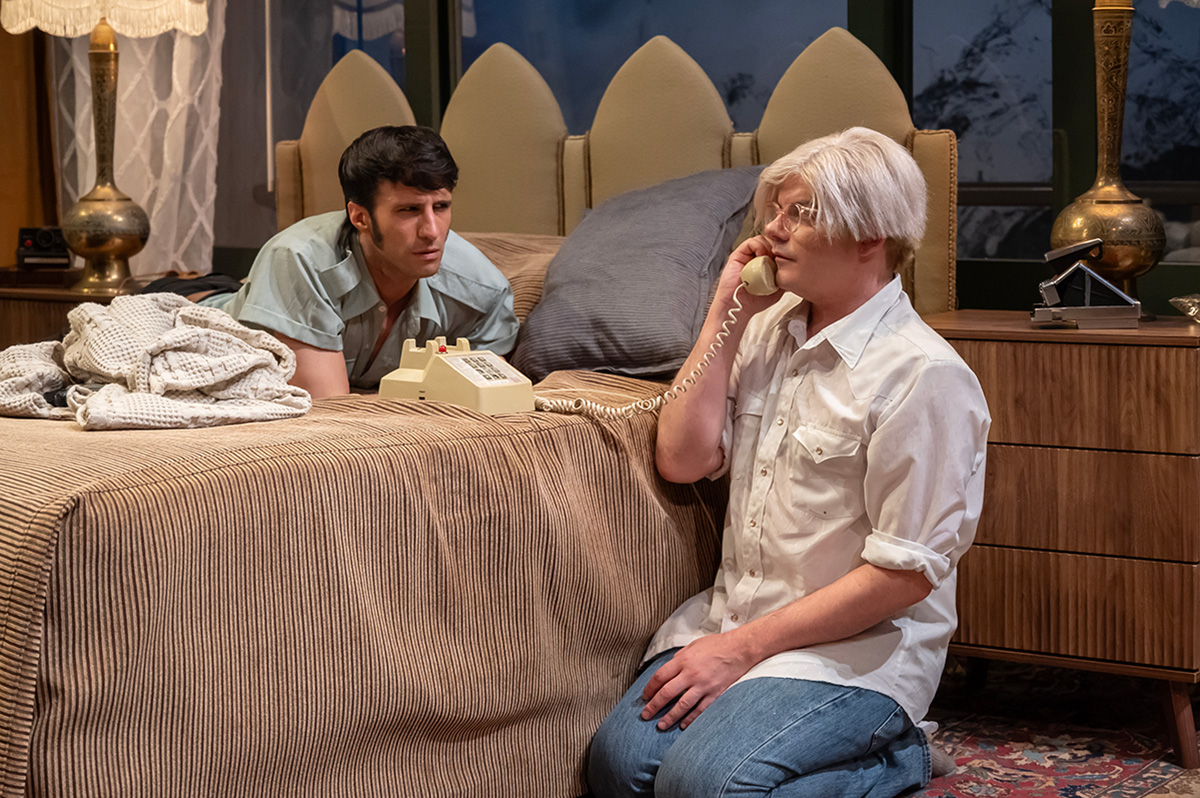
‘Andy Warhol in Iran’
Through July 6
Mosaic Theater Company at Atlas Performing Arts Center
1333 H St., N.E., WDC
$70
Mosaictheater.org
Behind the blasé veneer, Andy Warhol was more curious than people knew. Particularly when it came to money. He kept a close eye on how the ultra-rich lived, what fellow artists were being paid and who was paying them, and, of course, all the new and more saleable ways of making and selling art.
In playwright Brent Askari’s “Andy Warhol in Iran,” now playing at Mosaic Theater Company, Warhol (Alex Mills) is brought outside of his usual area of interest when he lands face to face with a young revolutionary. While Warhol could be artistically revolutionary, he didn’t connect with the idea of forgoing the pursuit of money and fame for the infinitely more difficult task of achieving social justice.
The 90-minute play is not fully factual, but rather inspired by Warhol’s real life 1976 trip to Tehran to make portraits of the royal Pahlavi family in the waning days of their reign, with a focus on Farah Diba, the Shah’s elegant wife and Iran’s last empress.
The action unfolds in a Tehran hotel suite boasting a glorious view of the snowcapped Alborz Mountains not far from Iran’s vibrant and bustling capital. It’s here, disguised as room service, that Farhad (played by Nathan Mohebbi) gains entrance to Warhol’s rooms, seeking to kidnap the pop art star to garner attention for the university students’ movement.
Warhol meets the armed intruder with a sort of wide-eyed wonderment, flummoxed why he has been selected for abduction. Warhol can’t understand why a young man like Farhad wouldn’t prefer to be paid a big ransom on the spot, or be cast as a star in one of the Warhol Factory flicks.
When Farhad replies it’s because Warhol is the most decadent artist in the world, Warhol mistakenly takes it for the ultimate compliment. After all, his biggest successes had been connected to celebrity and consumerism (think Campbell’s Soup Cans. 1962).
For Warhol, decadence is aspirational. He made portraits of financiers, movie stars, and jet setters. In fact, he’d been obsessed with the lives of the rich and famous since he was a small kid in Pittsburgh thumbing through Photoplay Magazine while bed bound with Saint Vitus Dance.
Accompanying Warhol to Tehran (unseen) are his business manager Fred Hughes, and Bob Colacello, editor of Interview magazine. Together, they make a merry trio of gay social climbers. These kinds of trips were a boon to the artist. Not only did they solidify a new strata of high society contacts, but were also superbly lucrative, thickly padding the painter’s pockets.
While in Iran, Warhol wanted only to view Farah’s vast world-class collection of jewels, sample the caviar on tap, and get his Polaroids. Then he’d fly first class back to New York and transfer the images to silk screen and sell the portraits to the Persian royals at a hefty price. He didn’t foresee any obstacles along the way.
Serge Seiden’s direction is spot on. He’s rendered a wonderfully even two-hander with a pair of terrifically cast actors. And Seiden plumbs the piece for humor mostly drawn from the absurdity of the situation without missing any of the serious bits.
As Warhol, out actor Mills is instantly recognizable as the eccentric artist. He’s wearing the button-down shirt, jeans, blazer, glasses, and, of course the famed shock of white hair wig (here a little more Karen than Andy). His portrayal is better than an imitation. He gives a bit of the fey and confused, but has also infuses him with a certain dynamism.
The energy works well with the intensity of Mohebbi’s would-be kidnapper Farhad. And while it isn’t a romance, it’s not impossible to think that Warhol might fall for a handsome male captor.
The connection between art and politics is almost always interesting; and though not a super deep dive into the era or the life of an artist, “Andy Warhol in Iran” is a compelling, charming, and sometimes funny glimpse into that intersection.
-

 U.S. Supreme Court3 days ago
U.S. Supreme Court3 days agoSupreme Court upholds ACA rule that makes PrEP, other preventative care free
-

 U.S. Supreme Court3 days ago
U.S. Supreme Court3 days agoSupreme Court rules parents must have option to opt children out of LGBTQ-specific lessons
-

 India5 days ago
India5 days agoIndian court rules a transgender woman is a woman
-

 National4 days ago
National4 days agoEvan Wolfson on the 10-year legacy of marriage equality










